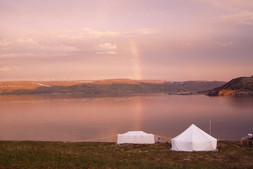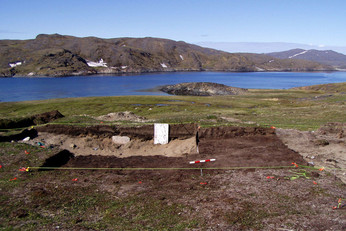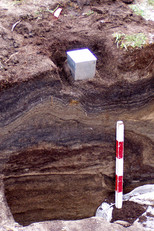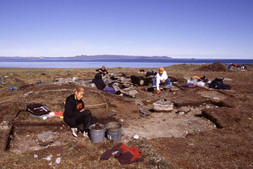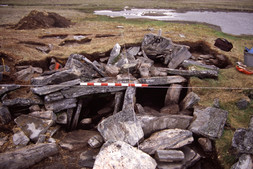- About
- Discovering Archaeology
- Projects and Activities
- Online Resources
- References
Archaeology
CURA "From the Tuniit to Inuit"
2001-2003The “From the Tuniit to Inuit” research project, a CURA (Community University Research Alliance) program under the auspices of the SSHRC (Social Sciences and Humanities Research Council), was primarily focused on the Qajartalik petroglyphs in the broader context of Palaeoeskimo settlement of the southern coast of the Hudson Strait. Overall, the project sought to provide more detailed documentation Nunavik’s cultural history through research.
Understanding settlement patterns along the southern coast of the Hudson Strait
We particularly wanted to understand the various phenomena that led to the colonization of the southern coast of the Hudson Strait, between Salluit (to the east) and Quaqtaq (to the west). Specifically, we were interested in how these initial populations developed.
The arrival of the Dorset people
The circumstances surrounding the arrival of the Dorset people required particular clarification, as recent discoveries seemed to contradict earlier claims. Although it was previously assumed that there was continuity between the two periods, it now appears that the area may have been abandoned at the end of the Early Palaeoeskimo period, then recolonized by the Dorset people about 2,000 years ago.
Contact between the Dorset and Thule peoples
The end of the Dorset period presented some uncertainties, especially concerning possible contact with the Thule people. The Thule, assumed to have left Alaska about 1000 CE, and to have rapidly occupied the Eastern Arctic, are thought to have replaced the Dorset people, who were having difficulty adapting to climatic changes. According to different hypotheses, the departure of the Dorset is explained by two extreme possibilities: either the new arrivals exterminated the surviving Dorset population, or the Thule adopted and integrated the last of the Dorset Palaeoeskimos.
However, recent research leads us to contest both hypotheses: the theory that the Dorset occupied areas around Quaqtaq and Kangirsujuaq beyond 1000 CE, as proposed by Plumet (1994), is now very much in question. Likewise, it appears that the Thule people arrived in the region much later than previously thought, perhaps around the 13th or 14th century (Park, 2000; McGhee, 2000). In these circumstances, it seems very unlikely that the two groups ever met or lived together, as we have demonstrated for the Kangirsujuaq-Quaqtaq area.
The Qajartalik petroglyphs
Study of the Dorset petroglyphs at Qajartalik has also progressed with some urgency, given the precarious state of the engravings and the threat that they may disappear in the near future. This project is a long-term effort that will require a great deal of research and development work. We also hope to resolve the issue of official recognition of the site by the federal government, a critical component in ensuring Qajartalik’s long-term preservation.
The CURA project allowed us to document various aspects of the site, most notably providing us the means to continue our excavation of unconsolidated (loose) deposits on an intact extraction zone from the Dorset Era. These additional visits have allowed us to document newly found petroglyphs, bringing the total number inventoried at Qajartalik close to 200.
Multidisciplinary research efforts
Various efforts have opened the door to collaborative projects between archaeologists, historians and various specialists in the earth sciences. This collaboration reached its peak with our work on the Tayara site (KbFk-7), near Salluit.
An original academic approach
The Tayara project also brought enormous success in terms of joint training, where we teamed university students with Inuit high school students and Inuit teachers. This program marked the launch of an original academic approach that has proved invaluable for participants.
Contact: Daniel Gendron

